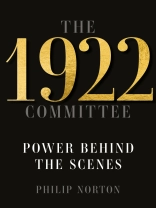The Conservative Private Members (1922) Committee is an important but elusive force in British politics. Despite becoming almost a household name during the leadership crises of 2022, it remains little understood beyond the corridors of Westminster.
Established in 1923 by a group of Conservative MPs elected the year before, the Committee offers backbenchers an opportunity to discuss their views and coordinate independently of the frontbench. Over time it has become the kingmaker of the Conservative Party, overseeing leadership elections and confidence votes such as that faced by Boris Johnson over ‘partygate’.
How did the Committee come together? How is it structured and how much power does it really wield? These are among the questions the book considers. Providing unprecedented insights into this long-standing institution, it is essential reading for anyone who cares about the integrity of our political system.
Cuprins
1 Setting the scene: parliamentary parties in perspective
Part I: History
2 Modest beginnings: the origins of the 1922
3 Speaking truth to power: in war and peace
4 Wielding the sword: the era of electing the leader
5 The maker and slayer of leaders: from Cameron to Sunak
Part II: Organisation and leadership
6 Who and when: membership and meetings
7 Engaging members’ interests: backbench committees
8 Transforming or presiding? Leadership in the ’22
Part III: The impact of the 1922
9 What’s going on? Bedding in and being heard
10 Collective action: a trade union for backbenchers
11 Us versus them: maintaining the integrity of the party
12 ‘May I have a word, minister?’ Influencing policy, challenging ministers
13 ‘The men in grey suits’: choosing a leader
14 Conclusion: the 1922 in British politics
Index
Despre autor
Philip Norton is Professor of Government at the University of Hull and sits in the House of Lords as Lord Norton of Louth












